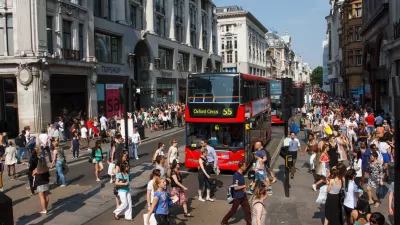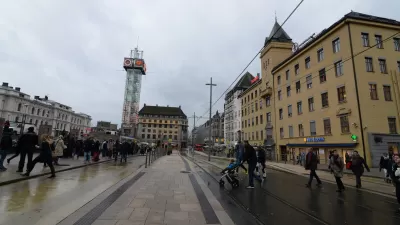London has always been a pedestrian-friendly city. But over the last decade the number of daily trips taken on foot in the city jumped by 12 percent, while walking declined nationwide. What explains the capital's pedestrian popularity?

"One of the largest changes in the city over the past decade is the number of pedestrians, says Michèle Dix of Transport for London (TfL), which runs the city’s transport networks."
"Several reasons account for the walking boom," explains The Economist. These include population growth, overcrowded subways, improved wayfinding, pedestrian-friendly street designs, and health campaigns.
"But the capital is bucking the national trend," The Economist adds. "Although in 2011 walking was up across the country, it has seen an overall decline of 27% in Britain since 1995. This is partly caused by fewer children walking to school. And while rural rambles are still popular, fewer people are walking to their weekly grocery shop. Many more are shopping online. Local authorities want to change this. Pedestrians spend an average of £373 ($571) a month, compared with £226 for drivers, according to data from TfL. Ailing high streets and town centres need to win back walkers. Learning from London’s incentives would be a start."
FULL STORY: Footfalls

Planetizen Federal Action Tracker
A weekly monitor of how Trump’s orders and actions are impacting planners and planning in America.

Map: Where Senate Republicans Want to Sell Your Public Lands
For public land advocates, the Senate Republicans’ proposal to sell millions of acres of public land in the West is “the biggest fight of their careers.”

Restaurant Patios Were a Pandemic Win — Why Were They so Hard to Keep?
Social distancing requirements and changes in travel patterns prompted cities to pilot new uses for street and sidewalk space. Then it got complicated.

Platform Pilsner: Vancouver Transit Agency Releases... a Beer?
TransLink will receive a portion of every sale of the four-pack.

Toronto Weighs Cheaper Transit, Parking Hikes for Major Events
Special event rates would take effect during large festivals, sports games and concerts to ‘discourage driving, manage congestion and free up space for transit.”

Berlin to Consider Car-Free Zone Larger Than Manhattan
The area bound by the 22-mile Ringbahn would still allow 12 uses of a private automobile per year per person, and several other exemptions.
Urban Design for Planners 1: Software Tools
This six-course series explores essential urban design concepts using open source software and equips planners with the tools they need to participate fully in the urban design process.
Planning for Universal Design
Learn the tools for implementing Universal Design in planning regulations.
Heyer Gruel & Associates PA
JM Goldson LLC
Custer County Colorado
City of Camden Redevelopment Agency
City of Astoria
Transportation Research & Education Center (TREC) at Portland State University
Camden Redevelopment Agency
City of Claremont
Municipality of Princeton (NJ)





























